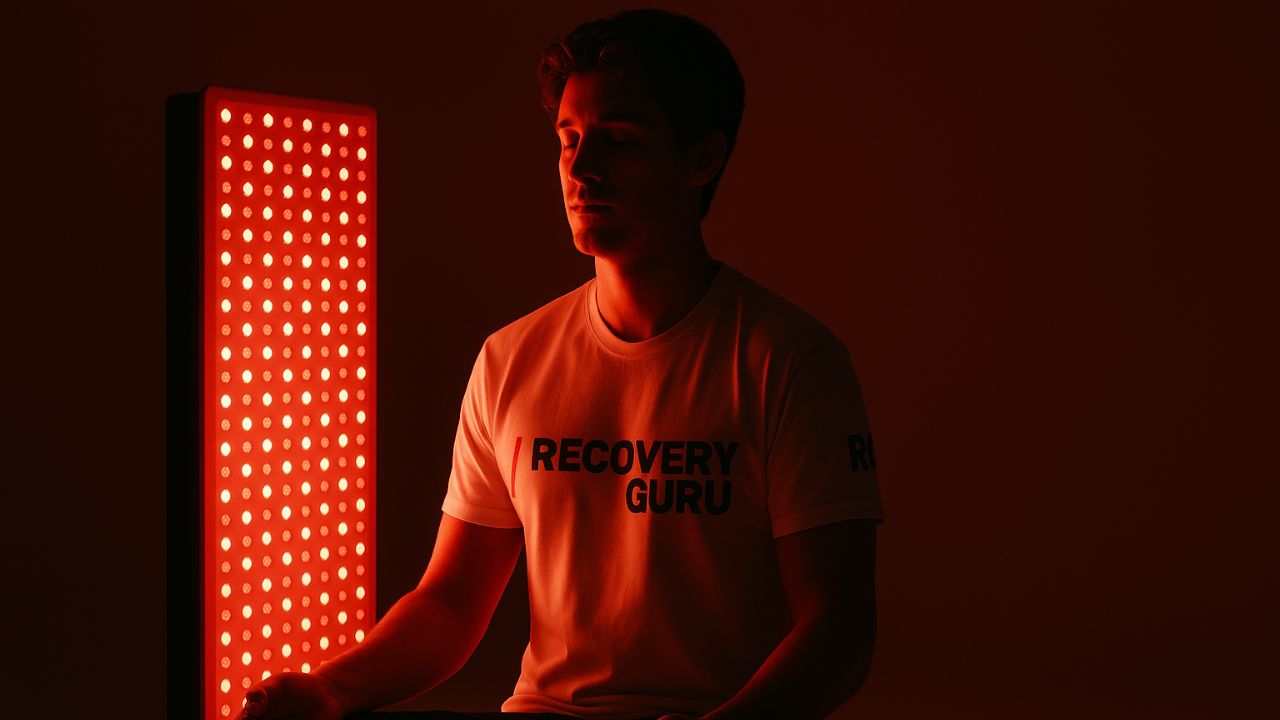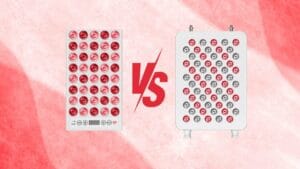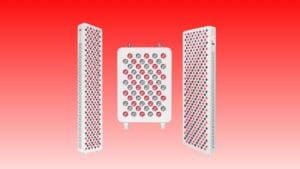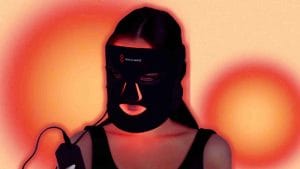This article has been medically reviewed by doctors to ensure it provides accurate, reliable, and up-to-date health information. We only use credible sources to support our content.
Conventional treatments for neurological conditions often fall short in their efficacy which makes more people turn to alternative therapies for hope and healing.
Among these, red light therapy offers a non-invasive way to potentially enhance brain function and alleviate symptoms.
We’ll explore the science behind red light therapy and shows its many benefits for brain health.
Let’s first clarify neurological conditions for you.
Understanding Neurological Conditions
Neurological conditions are complex and deeply personal. They affect both the individual diagnosed and their loved ones.
These conditions arise when something goes awry in the nervous system, which includes the brain, spinal cord, and nerves. It can be a disease that gradually diminishes cognitive functions or one that disrupts motor skills.
Among the most well-known neurological disorders are Alzheimer’s disease, Parkinson’s disease, and neuropathy.
- Alzheimer’s gradually erodes memory and turns once-vivid memories into foggy recollections.
- Parkinson’s primarily impacts movement and leads to tremors, stiffness, and difficulty with balance and coordination.
- Neuropathy, which often manifests as tingling, numbness, or pain in the extremities. It typically stems from nerve damage and can be challenging due to its unpredictable nature.
Traditional treatments for these neurological conditions often revolve around symptom management rather than a cure. For instance, Alzheimer’s medications focus on temporarily improving memory, while Parkinson’s medications try to control symptoms.
However, these treatments either have significant side effects or lose efficacy over time, with many patients finding themselves in a cycle of trying different medications and therapies with limited success.
This is where alternative therapy for neurological disorders, such as Red Light Therapy (RLT), brings a little hope.
Let’s explore how it works.
How Red Light Therapy Works for Neurological Conditions
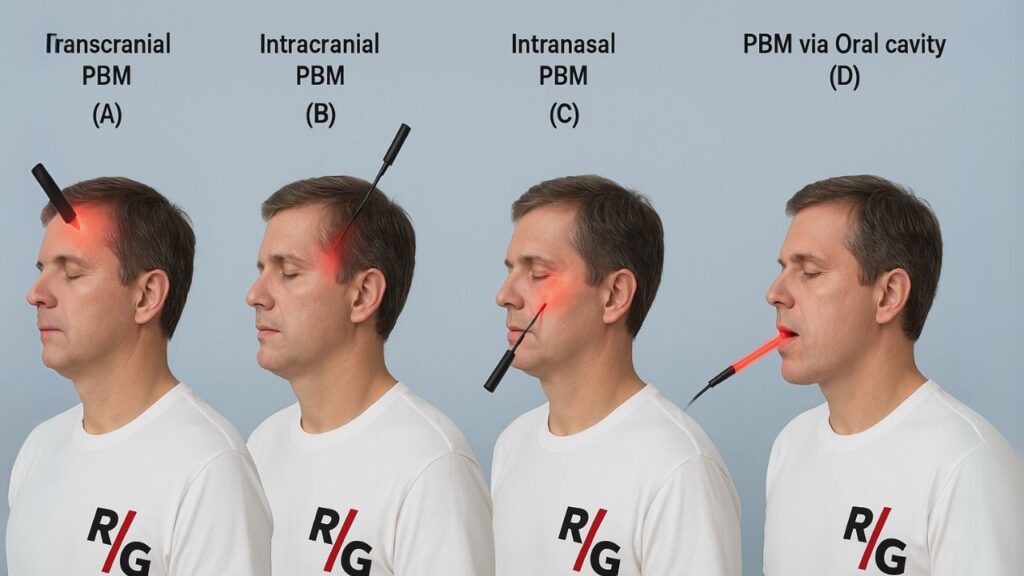
Red light therapy, referred to as photobiomodulation in medical settings, operates on a cellular level to promote healing and reduce inflammation. It offers potential relief for those grappling with neurological conditions.
Red light therapy uses specific wavelengths of light—primarily in the red and near-infrared spectrum—that penetrate the skin and reach the cells beneath. Once there, this light interacts with the mitochondria, the powerhouse of our cells.
The key player in this process is cytochrome c oxidase (CCO), the last enzyme in the respiratory chain within the mitochondria.
CCO absorbs these particular wavelengths of light, which then catalyzes a series of reactions that boost the production of adenosine triphosphate (ATP), the energy currency of cells.
This surge in cellular energy enhances the cells’ ability to repair and regenerate and leads to reduced inflammation and accelerated healing.
Interestingly, recent studies suggest that the benefits of photobiomodulation aren’t limited to direct exposure to the brain or affected areas. Evidence from animal studies indicates that even when the trunk is illuminated, rather than the head or eyes, neuroprotective effects can still occur.
It’s believed that light might activate certain molecules or cells within the body—such as immune cells, inflammatory mediators, or bone marrow-derived stem cells—that then release nerve growth factors or brain-derived neurotrophic factors, helping to rescue and restore neuronal functions.
The potential for red light therapy to support neurological health is supported by a growing body of research.
In one human trial, transcranial photobiomodulation (tPBM) was applied to five patients with mild to moderately severe dementia.
Over 12 weeks, these individuals showed:
- Significant improvements in cognitive function
- Better sleep patterns
- A reduction in anxiety and behavioral issues like angry outbursts and wandering
And guess what? There were no negative side effects!
Similarly, research conducted by Ivan Maksimovich in Moscow demonstrated the power of red light therapy in treating Alzheimer’s disease.
In his study, 48 patients received intracerebral photobiomodulation, while a control group of 45 patients was treated with standard medications.
The results were compelling: the PBM-treated group showed improvements in cerebral microcirculation, a reduction in dementia symptoms, and a restoration of cognitive functions. In contrast, the control group saw no significant changes.
These benefits are thought to arise from:
- Enhanced blood flow
- Improved tissue metabolism
- Stimulation of neurogenesis
- The clearance of amyloid beta plaques (which are features of Alzheimer’s pathology)
Benefits of Red Light Therapy for Brain Health
Red light therapy gives hope as an alternative therapy for neurological disorders. Here are some of its benefits for brain health.
1. Keep the Human Brain Healthy
Red light therapy stimulates specific areas of the brain and regulates the brain’s electrical activity, which is crucial for functions like memory and attention.
It also enhances blood flow and oxygenation to the brain to ensure that it has the energy required to function optimally.
This improved circulation and oxygen delivery are vital for keeping the brain healthy and supporting overall cognitive well-being.
2. Reduces Oxidative Stress
Oxidative stress is a molecular imbalance linked to several neurological conditions, including depression and brain injuries.
Red light therapy helps to manage this oxidative stress by balancing the production of nitric oxide, a molecule that, in excess, can make the oxidative damage worse.
3. Protects Cells from Damage
Red light therapy also helps with neuroprotection by protecting brain cells from damage and ensuring they survive and function longer.
This therapy seems to adapt to the needs of each cell, whether by protecting it from toxins or by supporting its repair processes.
4. Anti-Inflammatory Effects
In the brain, neuroinflammation can lead to neurodegenerative diseases and mood disorders.
Red light therapy works by reducing this harmful inflammation, specifically by interrupting the pathways that lead to the excessive production of inflammatory molecules.
By calming these inflammatory responses, red light therapy helps protect the brain from ongoing damage.
5. Treats Traumatic Brain Injury (TBI)
Traumatic brain injury (TBI) can have devastating effects, from cognitive impairments to emotional disturbances.
Red light therapy offers hope by reducing brain inflammation and preventing cell death. It also aids in recovery by improving cognitive functions and alleviating symptoms like headaches and anxiety.
A Better Approach to Neurological Health!
Red light therapy provides hope for treating neurological conditions for its non-invasive nature and better efficacy than traditional methods.
Its potential to enhance brain health, reduce inflammation, and protect cells makes it a good alternative therapy for neurological disorders.
However, you should always consult with healthcare professionals to use red light therapy for your unique needs.
If this exploration of red light therapy has inspired you, share this blog with others who might benefit.
You might as well discover the best red light therapy devices to improve your wellness.
Here’s to brighter tomorrows and healthier minds!
References
- Chung, H., Dai, T., Sharma, S. K., Huang, Y. Y., Carroll, J. D., & Hamblin, M. R. (2012). The nuts and bolts of low-level laser (light) therapy. Annals of Biomedical Engineering, 40(2), 516–533. https://doi.org/10.1007/s10439-011-0454-7
- Gordon, L. C., Martin, K. L., Torres, N., Benabid, A. L., Mitrofanis, J., Stone, J., & Johnstone, D. M. (2023). Remote photobiomodulation targeted at the abdomen or legs provides effective neuroprotection against parkinsonian MPTP insult. European Journal of Neuroscience, 57(11), 1611–1624. https://doi.org/10.1111/ejn.15973
- Hamblin, M. R. (2016). Shining light on the head: Photobiomodulation for brain disorders. BBA Clinical, 6, 113–124. https://doi.org/10.1016/j.bbacli.2016.09.002
- Johnstone, D. M., El Massri, N., Moro, C., Spana, S., Wang, X. S., Torres, N., … & Mitrofanis, J. (2014). Indirect application of near infrared light induces neuroprotection in a mouse model of parkinsonism—An abscopal neuroprotective effect. Neuroscience, 274, 93–101. https://doi.org/10.1016/j.neuroscience.2014.05.023
- Lin, H., Li, D., Zhu, J., Liu, S., Li, J., Yu, T., Tuchin, V. V., Semyachkina-Glushkovskaya, O., & Zhu, D. (2024). Transcranial photobiomodulation for brain diseases: Review of animal and human studies including mechanisms and emerging trends. Neurophotonics, 11(1), 010601. https://doi.org/10.1117/1.NPh.11.1.010601
- Maksimovich, I. V. (2019). Intracerebral transcatheter laser photobiomodulation therapy in the treatment of Binswanger’s disease and vascular parkinsonism: Research and clinical experience. Photobiomodulation, Photomedicine, and Laser Surgery, 37(10), 606–614. https://doi.org/10.1089/photob.2019.4649
- Salehpour, F., & Hamblin, M. R. (2020). Photobiomodulation for Parkinson’s disease in animal models: A systematic review. Biomolecules, 10(4), 610. https://doi.org/10.3390/biom10040610
- Saltmarche, A. E., Naeser, M. A., Ho, K. F., Hamblin, M. R., & Lim, L. (2017). Significant improvement in cognition in mild to moderately severe dementia cases treated with transcranial plus intranasal photobiomodulation: Case series report. Photomedicine and Laser Surgery, 35(8), 432–441. https://doi.org/10.1089/pho.2016.4227
- Zhao, Y., Wang, Y., Liu, Y., & Zhang, Y. (2019). Photobiomodulation therapy for Alzheimer’s disease: A review of mechanisms and applications. Frontiers in Aging Neuroscience, 11, 252. https://doi.org/10.3389/fnagi.2019.00252

